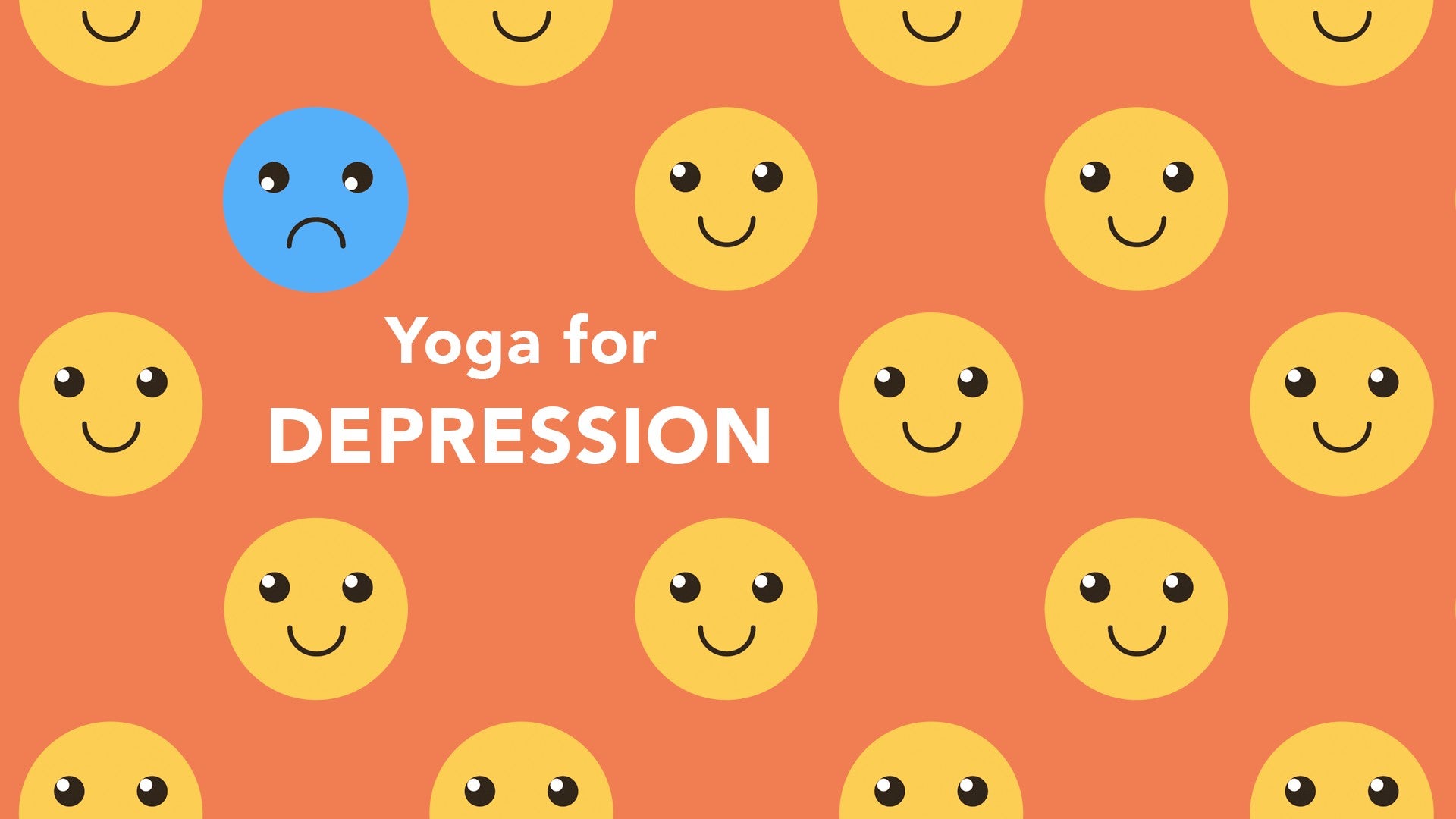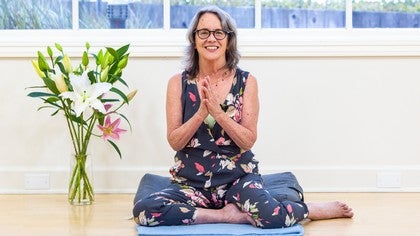Description
About This Video
Transcript
Read Full Transcript
So here we are again, welcome back. We've been talking about anxiety and depression, looking at the Western approach, and we've moved into the yogic understanding from the ancient tradition. And now I'd like to just focus on, okay, now what? What is it that you can do to feel better? So in combining the Western understanding and the Eastern understanding, here are eight strategies that pretty tried and true ways to help balance the moods and ultimately to feel better.
So let's get started. The first one is to build willpower. Now that sounds funny because, I mean, when I'm feeling really anxious, when I'm feeling depressed, it's very hard to actually do anything. So what the Ayurvedic practitioners say in that sort of ancient yogic understanding of health, they say to practice Dinnacharya. Dinnacharya is simply ritual.
And the reason that it helps build willpower is because you create certain things that you do every single morning and often every single evening without having to think about it. So there's nothing in that morning or evening ritual that you have to decide upon. And so a lot of times, researchers will say that we only have a finite amount of willpower throughout our day. So why waste it trying to figure out when you brush your teeth, when you make your coffee, when you meditate, whatever those things are that you do during your morning. So Ayurveda says, practice Dinnacharya and then that will enhance your ability to make decisions later on in your day that are more important.
Sometimes that's hard. It's really hard to find those rituals that you can commit to. So don't make yourself crazy. Pick three that you always do in the same way at the same time every day. So for example, those three might be that, for me, I brew a pot of green tea every single day at the same time in the same way before I sit down to work.
And I never sit down to work until I've done that ritual. I don't think about it. The other thing is when I wake up in the morning, the very first thing I do is five minutes of mantra meditation before I even get out of bed. Never think about it. I get up and then you might say, OK, I get up in the morning.
I always have my oatmeal. I always do this. I always sit for five minutes. I always do one asana, whatever that is. Make a commitment to do, say, three of them for a week.
And if those three are not happening, put them aside and try three more until you feel like, yes, this is the kind of rituals I can do every day. In the evening, one thing that has really, really helped me with mood balancing is to separate my day from my evening. A nice way to do that for me is to put my legs up the wall and put some weight on my belly right down by my hip flexors, close my eyes, and just breathe. And I don't try to breathe any particular way. I just breathe and feel my back on the floor.
And then when I'm done, depending on how much time I have, five minutes, 10 minutes, three minutes, whatever it is, I can then, when I roll to the side, I end my day and I begin my evening. Things like that make it very simple. And I think one other aspect of dinacharya that's important is that it prevents what we like to call decision fatigue. And so it can also lessen your anxiety. And if you're depressed, it actually gets you up and committed to moving without a lot of thought.
So the second one is to commit to practice. Now, just the thought of committing to practice has got to make people anxious. It certainly used to make me really anxious. Okay, what do I do? Do I have to do this 90 minute practice?
My God, I can't even imagine. Personal practice is exactly that. It's personal. So whatever you can do to incorporate some kind of body-based action in your day, what can you do to bring breathing practices? Could be three minutes.
It could be 60 seconds. It could be five minutes into your day. What are those practices that you could commit to? And really understand that every day is going to be different. Some days you're going to feel like, yes, I can commit to an actual awesome practice.
Other days, all right, I'm good with about 60 seconds of breathing or two minutes of sun salutations done. The third one is one of my favorites, set intentions. The intention that I set every single day is to be generous and patient with myself. In Buddhism, there are these six practices that they do called the paramitas. They start with generosity and discipline comes next and then patience.
So discipline is bookended by generosity and patience. And then we have what some Buddhists call wholehearted enthusiasm, meditation and wisdom. So what this intention is for me is to be, to yes, show up, excuse me, yes, practice, yes, create willpower, cultivate my willpower. But at the end of the day, be generous and be patient and know that this is a practice, this is a process. Number four, move energy.
That can mean anything for you. That can mean if you get stuck, go for a run, go for a walk, be in nature, journal, write those things down, cry, anything that will move the energy through the body, remembering again that feelings are energy. So allow them to be able to get unstuck and move. And you'll find a way, I am seriously not a runner, but just getting out into nature, putting on music, cranking up the tunes and cooking, anything that will get that energy unstuck for you. Number five, cultivate the opposite.
It's a long time, very ancient practice that potentially invites us to do and that is we get stuck in this negative connotations, everything's negative, potentially says when that happens, flip it. What would it feel like to focus on the best case scenario? When I'm sad, what would it feel like to flip that and play with joy? And the way to do that sometimes is to simply bring something into your mind, into your heart that you cannot help but smile about and be there and just feel. And sometimes I toggle back and forth and when I realized in that toggling between sadness and joy, sadness and joy, that I'm in equanimity, I'm right here in the center of whatever's happening and I'm okay.
Six, take prana breaks. I know that's a funny thing to say but several years ago I met this young woman who had just done her 200 hour in yoga teacher training and she said that there were a couple of people in her teacher training who would go out after yoga and have a smoke. And she thought, huh, okay, that's odd. But what would happen, but what she noticed was that smokers, where she works or in teacher training or wherever it was, tend to take breaks. They tend to remove themselves from a situation, go out and take some deep breaths, don't they?
And they take a nice deep breath in, they take a nice deep breath out. So what would happen if you were to do that without a poisonous stick in your mouth? So we call those prana breaks. Remove yourself from a situation, sit down, take a walk and just take two or three minutes of conscious breathing. What's it feel like to inhale with a smile?
What does it feel like to exhale? And flutter your lips on exhale, rubberize that face. Exhale nicely and float that exhale. Just do that five or six times throughout your day. Seven, be of service.
Do for others. Get out of yourself and focus on something else. They did a really interesting study a few years back where they had a group of people watch a video of Mother Teresa doing Mother Teresa things, really supporting and administering to the poor. And the video was a documentary on her life and her work. And after the video, they asked people how they felt about it.
And what they did was they measured immune response before the video and they measured immune response after the video. But before they did the follow-up, after the video immune response, they asked people, what'd you think? There were people that said, oh my God, I was so touched by that, that was amazing. That was so beautiful. There were other people that said, oh my God, what a sham, I can't even believe I'm watching this.
So ridiculous. And yet when they measured immune response of both groups, both groups had elevated immune response and elevated parasympathetic nervous system response. So the body knows even if the mind is unwilling to get it, right? So be of service, find something that you know will bring other people joy. In eight, express gratitude.
Scientists say that expressing gratitude improves immune function and activates the parasympathetic nervous system. It's easy to express gratitude for those you love, those who've supported you and helped you along your way. It's a little bit harder, and yet it's a fabulous practice to also express gratitude for the things that are difficult in your life and to see them also as teachers along your path to wellness. So those are our eight ways to feel better, and I would love to know perhaps what your path is and whether you have other ways that have worked for you. So let us know that, and in the meantime, be well, namaste.
Yoga for Depression: Linda Sparrowe
Comments
You need to be a subscriber to post a comment.
Please Log In or Create an Account to start your free trial.













